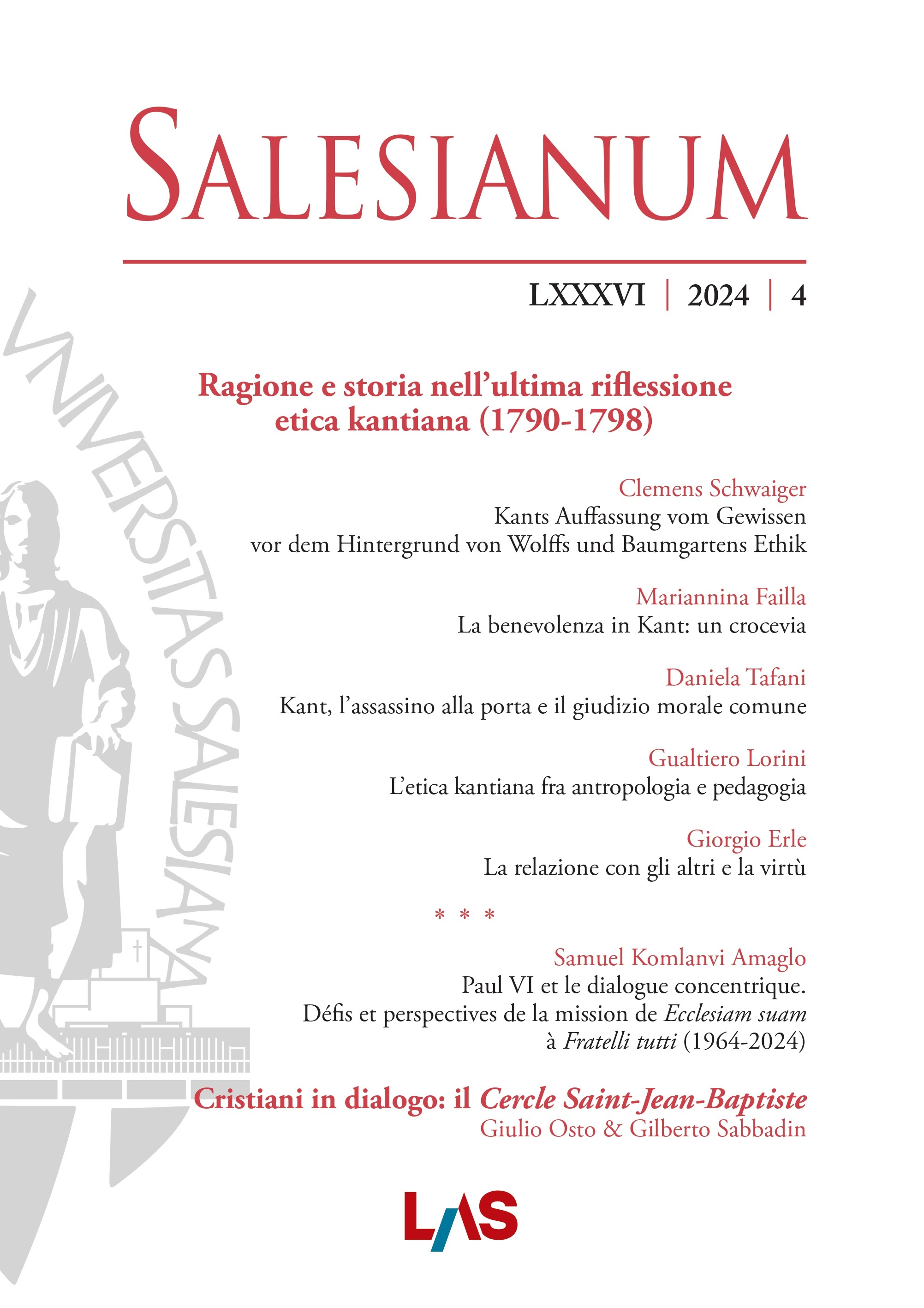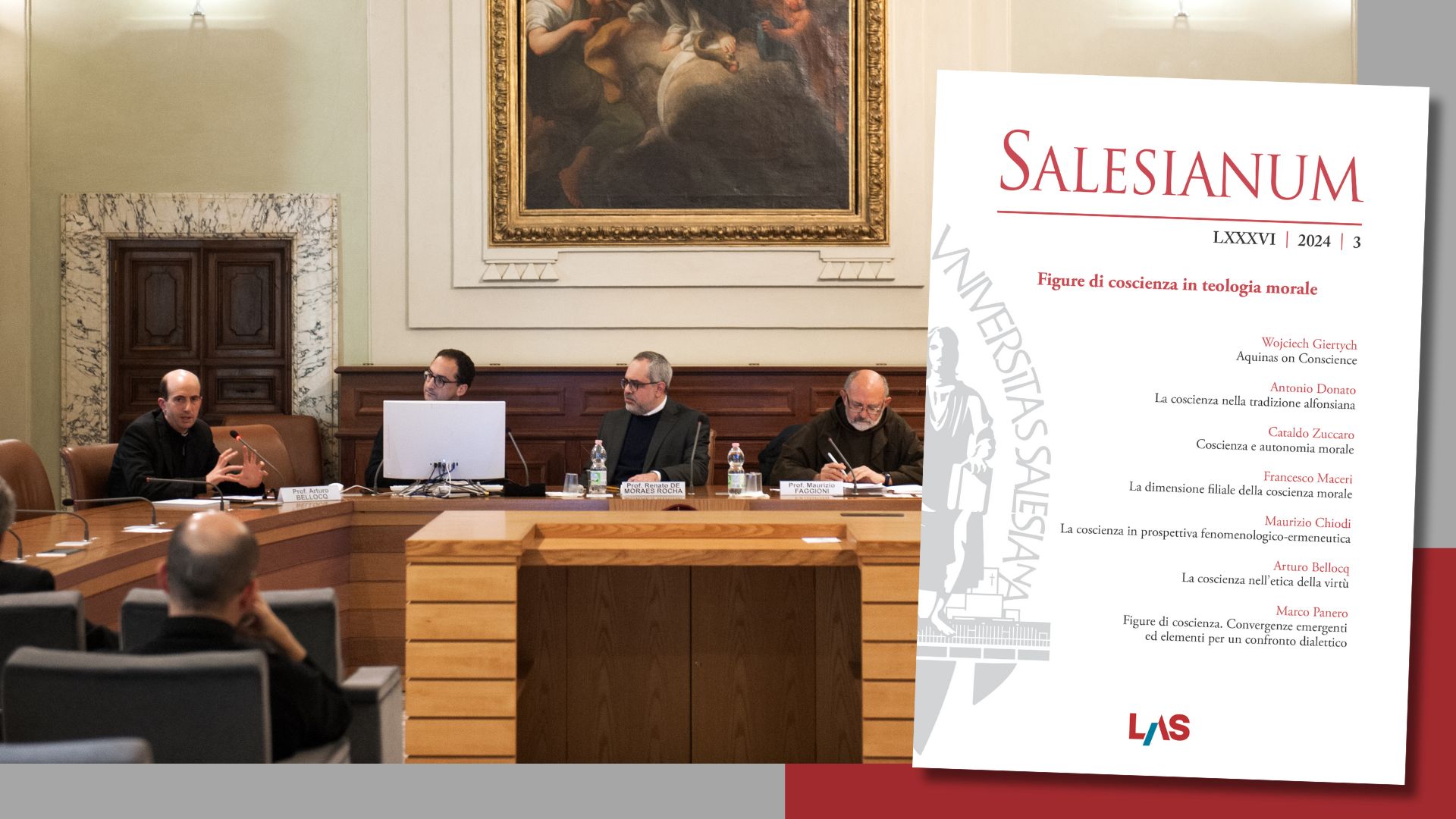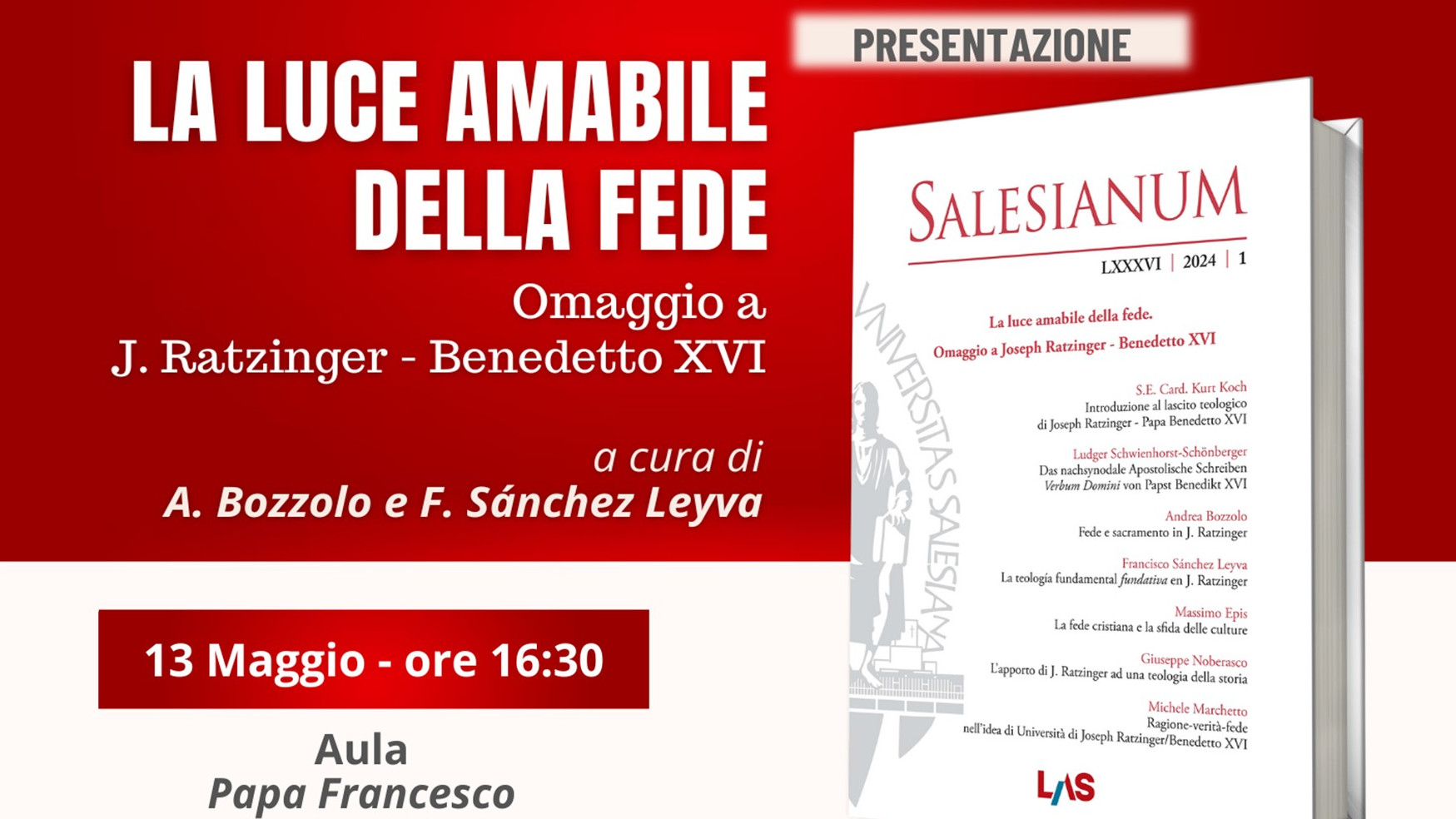La dottrina tomista dell’amor. Sondaggi intorno a STh I-II, q. 26, a. 2
The Thomist doctrine of amor. Surveys around STh I-II, q. 26, a. 2
Salesianum vol. 85 (2023) n. 2, 238-259Sezione: Studia
Ricevuto: 29-04-2023 - Approvato: 15-05-2023
Sommario
Lo studio presenta le linee di fondo dell’insegnamento tomista sull’amore umano, mostrandone la ricchezza e l’aderenza all’esperienza universale. Salvaguardando la distinzione tra le due forme fondamentali di amor (sensitivo e intellettivo, che corrispondono a passioni ed affetti), lo studio ne esibisce la sostanziale omogeneità, nel rispetto della comune struttura di amor. Essa viene esposta in STh I-II, 26,2, dove si individuano tre momenti logicamente distinti (immutatio appetitus, coaptatio, complacentia). La pertinenza della proposta tomista trova conferme in svariati ambiti dell’esperienza morale, a cui lo studio accenna.
Parole chiave
Tommaso d’Aquino | Amore | Passioni | Coaptatio | Compiacenza
Abstract
The study presents the basic outlines of Thomist teaching on human love, showing its richness and adherence to universal experience. Safeguarding the distinction between the two fundamental forms of amor (sensory and intellectual, which correspond to passions and affections), the study exhibits their substantial homogeneity, respecting the common structure of amor. It is expounded in STh I-II, 26.2, where three logically distinct moments are identified (immutatio appetitus, coaptatio, complacentia). The relevance of the Thomist proposal finds confirmation in various areas of moral experience, to which the study alludes.
Keywords
Thomas Aquinas | Love | Passions | Coaptatio | Complacency


